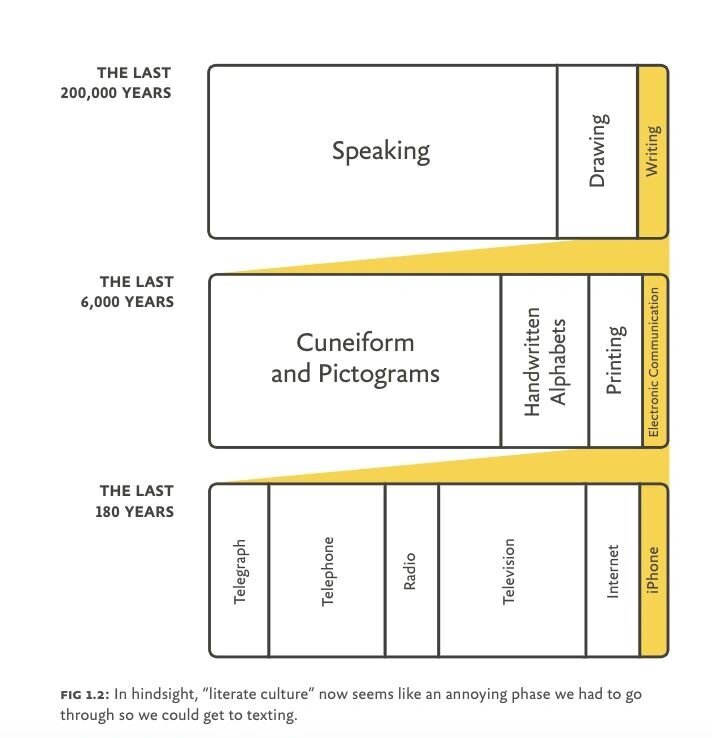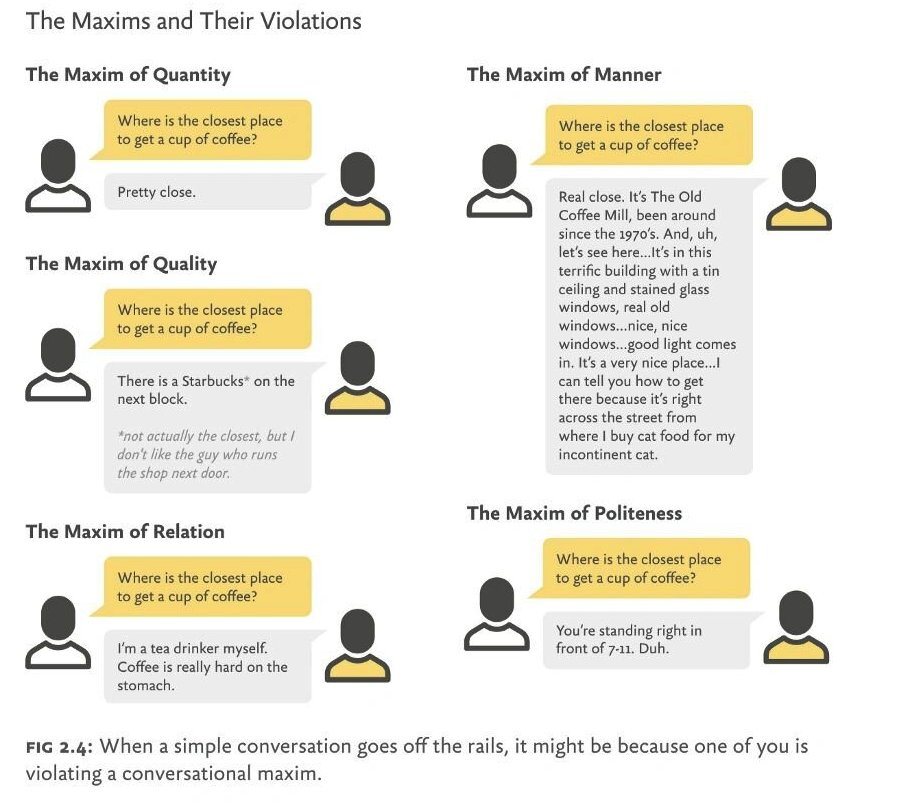A Book Apart: Conversational Design
The conversation is the best model for creating more human-centered design — Voice User Interfaces (VUI)
We have all heard it said that one picture is worth a thousand words. Yet, if this statement is true, why does it have be a saying? — Walter ONG.
Apple put Siri in the iPhone and Amazon make a talking speaker. Now we are in the era of Chatbot — A computer program or an artificial intelligence which conducts a conversation via auditory or textual methods. Such programs are often designed to convincingly simulate how a human would behave as a conversational partner.
Conversational interfaces can interpret natural language on the fly — whether typed or spoken. Chatbots text us and “intelligent assistants” answer our utterances. Taking a conversational approach to interaction design requires applying the deeper principles of how humans interact with one another so we can create systems that succeed on human terms, no matter the mode of interaction.
Texting is how we talk now. We talk by tapping tiny messages on touchscreens — we message using SMS via mobile data networks, or through apps like Facebook Messenger or WhatsApp.
The Oral Formula
Orality knits persons into community. — Walter ONG
Before literacy, words were ephemeral and all knowledge was social and communal. There was no “save” option and no intellectual property. The only way to sustain an idea was to share it, speaking aloud to another person in a way that made it easy for them to remember. This was orality — the first interface.
The Labor of Literature
Literacy created distance in time and space and decoupled shared knowledge from social interaction. Human thought escape the existential present. The reader doesn’t need to be alive at the same time as the writer, let alone hanging out around the same fire pit or agora.
In Orality and Literacy: The Technologizing of the World, Walter Ong explored the “Psychodynamics of orality”, which is, coincidentally, quite a mouthful. Though his research, he found that the ability to preserve ideas in writing not only increased knowledge, it altered values and behavior. People who grow up and live in a community that has never known writing are different from literate people.
Oral Culture is Immediate and Social
In a society without writing, communication can happen only in the moment and face-to-face. It sounds like the introvert’s nightmare! Oral culture has several other hallmarks as well.
Spoken words are events that exist in time. It is impossible to step back and examine a spoken word or phrase.
All knowledge is social, and lives in memory.
Individuals need to be present to exchange knowledge or communicate.
The community owns knowledge, not individuals.
There are no dictionaries or authoritative sources.
Literate Culture Promotes Authority and Ownership
Printed books enabled mass-distribution and dispensed with handicraft of manuscripts, alienating readers from the source of the ideas, and from each other.
The printed text is an independent physical object.
Portable printed works enable individual consumption.
Print creates a sense of private ownership of words.
Individual attribution is possible.
Print fosters a sense of closure.
Technology Brought Us Together Again — Secondary Orality
All that studying allowed people to accumulate and share knowledge, speeding up the pace of technological change. And technology transformed communication in turn.
Immediate. There is no necessary delay between the expression of an idea and its reception. Physical distance is meaningless.
Socially aware and group-minded. The number of people who can hear and see the same thing simultaneously is in the billions.
Conversational. This is in the sense of being both more interactive and less formal.
Collaborative. Communication invites and enables a response, which may then become part of the message.
Intertextual. The products of our culture reflect and influence one another.
Wikipedia: Knowledge Talks
Wikipedia is the most successful collaborative encyclopedia that would be absent without the internet. According to Wikipedia, encyclopedias have existed for around 2000 years. Wikipedia has existed since 2001, and it is the fifth most popular site on the web.
Texting
Texting means that we’ve never been more lively (yet silent) in our communications. While we still have plenty of in-person interactions, it’s gotten easy to go without. We text grocery requests to our spouses. We click through a menu in a mobile app to summon dinner. We exchange messages on Twitter and Facebook instead of visiting friends in person. We are rapidly approaching a future where humans text other humans and only speak aloud to computers.
We are participating in a radical cultural transformation. The possibilities manifest in systems like Wikipedia that succeed in changing the world by using technology to connect people in a single collaborative effort.
Indeed, language changes lives. It builds society, expresses our highest aspirations, our best thoughts, our emotions and our philosophies of life. But all language is ultimately at the service of human interaction. Other components of language — things like grammar and stories — are secondary to conversation. — Daniel L. Everett, How Language Began
Interactions Require Interfaces
A system is a set of interconnected elements that influence one another.
An interface is a boundary across which 2 systems exchange information.
Interaction is the means by which the systems influence each other. An interface is a prerequisite for interaction.
Conversation is the Original Interface
Given this amount of potential complexity, and the amount of context switching the modern world requires, interfaces need to be as simple, intuitive, and as similar as possible. Conversation is how people exchange information with many systems and with as little effort as possible.
As our personal devices know more and more about us — where we live, where we work, when we’re at the movie, when we’re listening to music — they can make netter decisions about how we might like to interact with them. — Laura Klein, Designing for Voice Interfaces
How Conversation Works
*Quantity: Just enough information
Make your contribution as informative as is required.
Do not make your contribution more informative than is required.
*Quality: Be truthful
Do not say what you believe to be false.
Do not say that for which you lack adequate evidence.
*Relation: Be relevant
Manner: Be brief, orderly, and unambiguous
Be Polite
Error-Tolerant: A truly conversational interaction, then, is tolerant of faults, anticipates errors, and recovers seamlessly.
Cooperative
Goal-oriented
Quick and clear
Turn-based
It’s good that computers don’t work like the brain. The reason I like my electronic calculator is that it is accurate; it doesn’t make errors. If it were like my brain, it wouldn’t always get the right answer. The same principle applies to all our machines; we should capitalize on the difference, for together we complement one another. — Donald Norman.
The Context of Action
To support the success of the user’s action, the system needs to follow the efficient and context-aware manner:
Prerequisites to Action: What does the user need to do before the action is possible
Encouragement to action: How does the system articulate the benefits of taking the actions?
Instructions for action: Is it as simple as clicking Submit, or are we going down a complex path?
Consequences of action: Set expectations of what will happen once the action is taken.
Level of commitment: Is it possible to undo this action?










